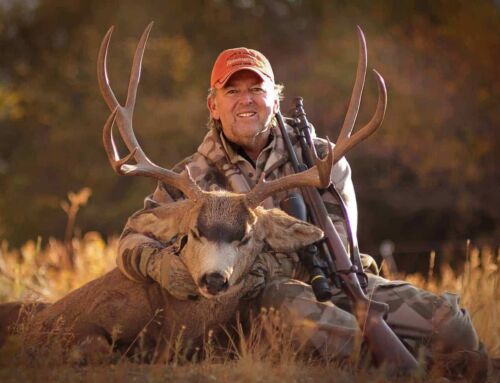 All us humans need a sanctuary, a place where we feel safe and comfortable hanging out, sometimes alone and sometimes with friends. A refuge we can come home to and flop into bed after dinner, or a long night out on the town.
All us humans need a sanctuary, a place where we feel safe and comfortable hanging out, sometimes alone and sometimes with friends. A refuge we can come home to and flop into bed after dinner, or a long night out on the town.
Old bucks need those shelters too. They’re called sanctuaries. Now, before full spring green-up, is the perfect time to roam your hunting ground and find them.
A sanctuary is the major bedding and security cover for the deer that live on or travel through your property. There are smaller satellite covers dotted around the woods that bucks use frequently, but here we’re talking about the main safe zone.
In a Maryland study, researchers found that GPS-collared bucks were drawn like a magnet to a greenbrier-and-thorn copse that was basically impenetrable to humans. “The only way you can get in is to find a deer trail and get on your hands and knees and go in there,” said Dr. Mark Conner, who led the study.
In the same project, the researchers found that another cover preferred by deer was a designated waterfowl sanctuary around ponds and marshes. “It’s almost the opposite of the other sanctuary,” said Conner. “It’s very open, but like the (thicker) one, there is no human disturbance.”
Conner and his team noted that the 2 areas were not only sanctuaries but also core areas where multiple bucks spent 50 percent of their time during the hunting season. Because there’s no human disturbance.
How Big?
Size doesn’t matter. Whether you hunt 800 acres or 100, scout out the thickest, roughest, most inhospitable spot and designate it as the sanctuary. That might be 200 nasty acres of an 800-acre forest, or a 20-acre rose thicket on 100 acres.
Ideally, your sanctuary will be located in or near the center of your land. As bucks travel to and from it on trails and in funnels from all points on the compass, you’ll have many options for tree stands and blinds on different winds. Also, the deeper into your property the cover, the farther it draws deer in from your neighbor’s lands.
Food Factor
You can have the best security cover for miles, but if there is not quality feed nearby, deer will not stay there long or consistently. Crop fields in the vicinity are best, along with mixed hardwoods and mast. If food is scare within a mile of your sanctuary, plan to put in some food plots next spring if you can.
Hunting a Sanctuary
Once you designate a cover as a buck sanctuary, never step a boot inside it. No scouting, no shed-hunting, no human disturbance. But if you’re smart, you’ll bowhunt the fringes of it smartly this fall.
Good access from downwind is critical, so use a steep creek, old log road or the like to sneak in and hang tree stands. The cover and topography are different on every property. You might be able to close to within 60 yards of a sanctuary, or a stand in a rub-laced funnel 120 yards out might be safer better. Use your gut to decide.
In early season, I love to hunt the edges of a sanctuary where acorns fall, or where I’ve planted a narrow strip of green clover. Deer use the edges heavily when moving from bed to feed.
As the rut approaches, bucks cruise the edges of security cover, checking does as they go in and out of the bedding area. When bucks rut, you can push your setup closer to the cover, but only when the wind is perfect.
If you see an old buck cruising the fringes, and especially if he’s heading into the cover, 8 times out of 10 he’ll circle downwind a ways and sniff for does and danger before he steps inside the bedroom. Work that into your stand setup.
Later, once gun season opens, you must post on a vantage that overlooks a main funnel into your sanctuary. When the rifles crack on neighboring lands, bucks will come to the safe haven you’ve left undisturbed on your side of the fence. Depending on the size and lay of the land, it might take a good buck 2 or 3 days to get there, but he will come. Keep watching.





